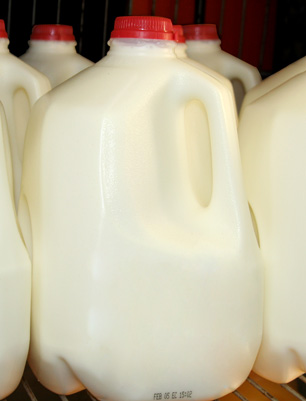DEHP [Di(2-ethylhexyl) phthalate]
| EPA Maximum Contaminant Level (MCL) |
0.006 mg/L |

DEHP is used in food packaging plastics, and can often be found in milks and cheeses.
DEHP [Di(2-ethylhexyl) phthalate] is used primarily as a plasticizer in many products, including polyvinyl chloride (PVC), rubber, cellulose and styrene. It's often used as a plasticizer in food packaging, and has been found readily in milks and cheeses. Another study reported by the World Health Organization identified the compound in tempura (frying) powder, instant cream soup, fried potato cake, and orange juice.
DEHP most often arrives in drinking water through discharge from rubber and chemical factories.
Health Effects of DEHP
The International Agency for Research on Cancer has concluded that DEHP is “not classifiable as to its carcinogenicity to humans.” The EPA lists cancer, liver, and reproductive problems as concerns:
Some people who drink water containing di(2-ethylhexyl) phthalate in excess of the maximum contaminant level [0.006 milligrams per Liter (mg/L)] over many years may have problems with their liver, or could experience reproductive difficulties and may have an increased risk of getting cancer.
Water Treatment for DEHP
The EPA recommends granular activated carbon (GAC) for the treatment of DEHP.
Sources: EPA, WHO, IARC, Photo: WikiMedia, author: ChildofMidnight
Site Index
Filtration Systems
- Aeration for Iron & Sulfide
- Backwashing Filters
(whole house & well units)
- Chlorine & Chemical Injectors
- Countertop Water Filters
- Garden Hose Filters
- Reverse Osmosis, Residential
- Reverse Osmosis, Commercial
- Shower Filters
- Specialty Filters
- Ultraviolet Systems
- Undersink Filters
- Water Softeners
- Whole House Filters
Cartridges
Parts
- Replacement Parts
- Faucets
- Filter Media
- Fittings
- Housings
- O-rings
- Pumps
- Pura UV
- R.O. Parts
- R.O. Tanks
- R.O. Booster Pump
- VIQUA UV